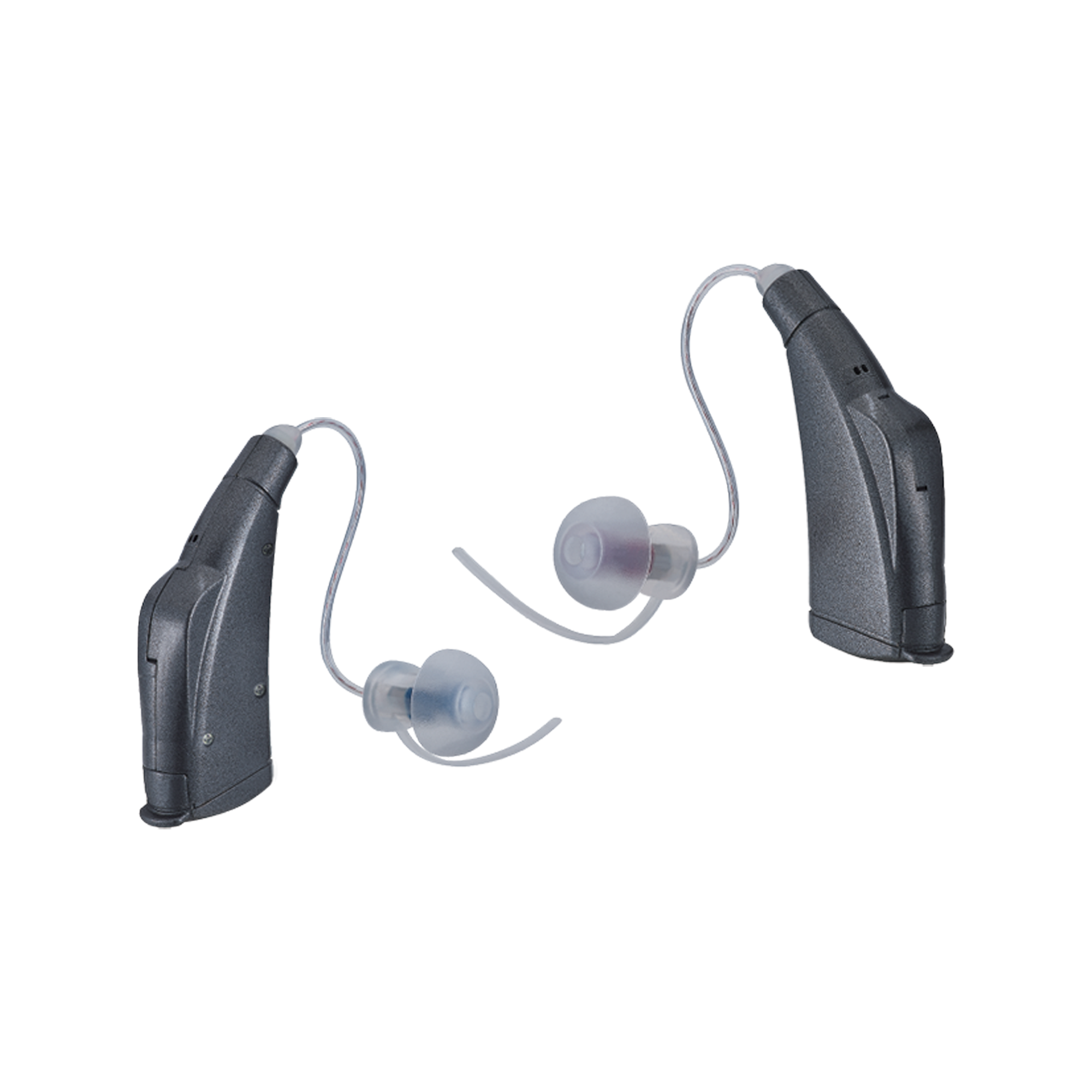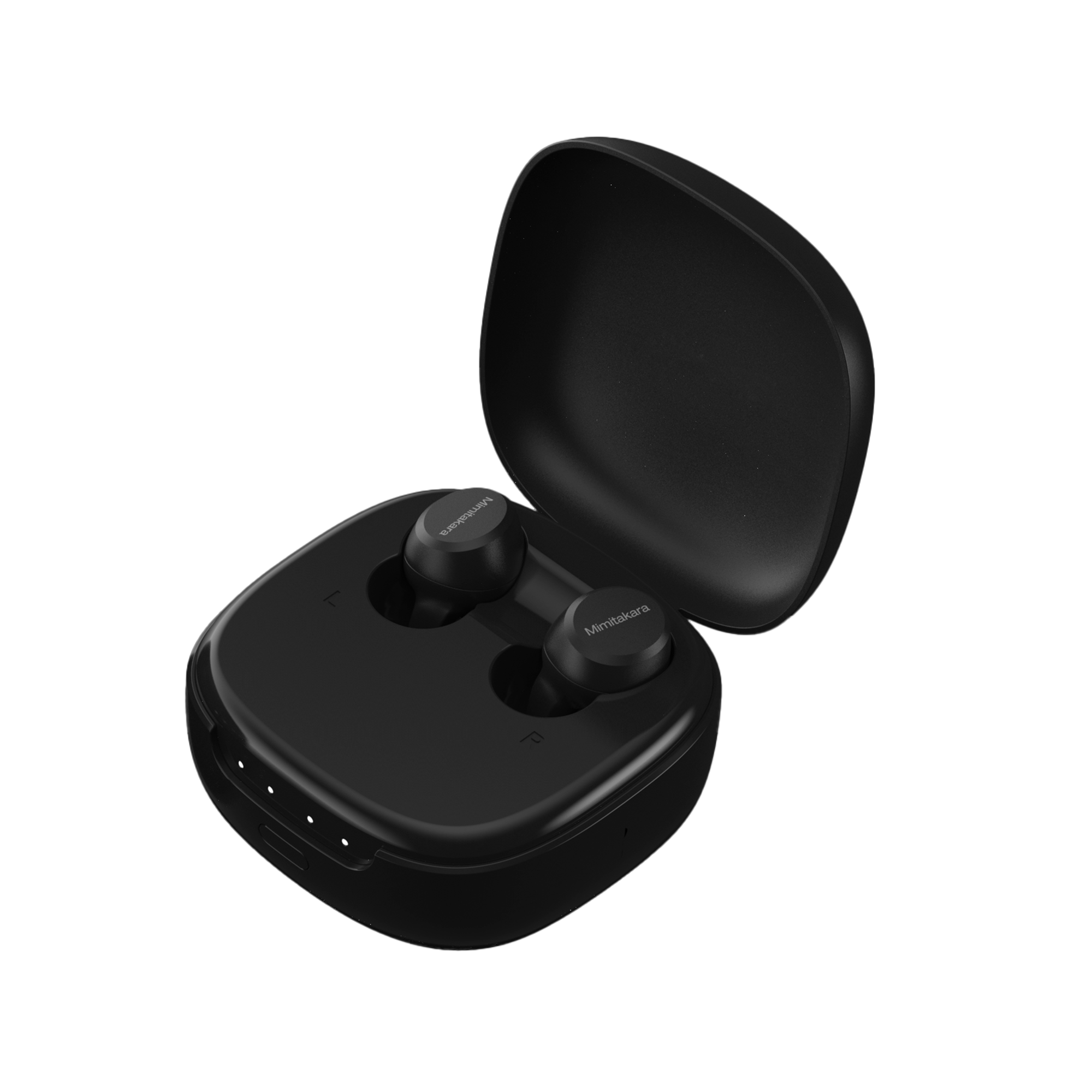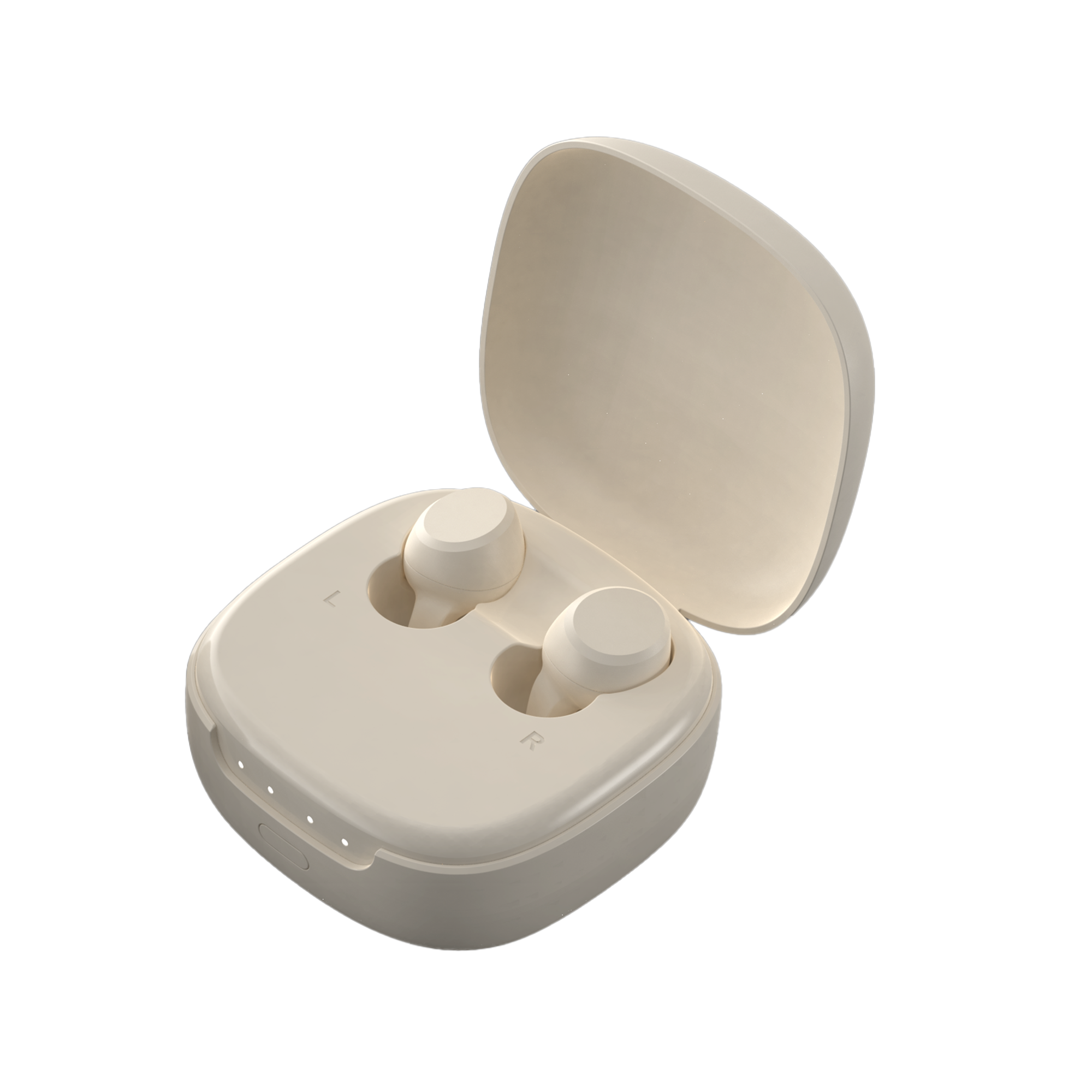Among these, Bluetooth-enabled OTC hearing aids have surged in popularity, allowing users seamless connectivity to various devices, from smartphones to televisions, thereby promising a more integrated listening experience. This move towards more accessible, FDA-approved hearing solutions underscores a significant advancement in auditory health, offering hope and improved auditory experiences to millions.
As 2026 approaches, Mimitakara's OTC hearing aids stand out for their advanced features, including superior Bluetooth connectivity, user-friendly customization, and effective noise reduction capabilities, positioning them as one of the premier choices for those seeking sound quality and connectivity. This article delves into the technology behind these cutting-edge devices, their benefits over traditional non-prescription hearing aids, and how they can positively impact the lifestyle of users with hearing loss, making them a must-consider option for anyone looking to address hearing loss symptoms with innovative solutions.
Key Advancements in Bluetooth OTC Hearing Aids Technology
Bluetooth Evolution and Integration in Hearing Aids
- Introduction of Bluetooth Technologies: Classic Bluetooth connectivity first appeared in the hearing aid industry around 2005, with the Bluetooth Low Energy (BLE) protocol introduced later in 2011.The BLE protocol, as utilized in devices like ReSound NEXIA, is designed to adapt to future Bluetooth innovations, including Auracast for enhanced audio experiences.
- Advancements in Features and Functionalities: Modern Bluetooth hearing aids, such as those from Jabra and Starkey, now incorporate health tracking and fall detection, notifying selected contacts through connected apps when a fall occurs.ELEHEAR and NuHeara have integrated AI and machine learning to tailor devices to individual auditory profiles, enhancing the personalization of hearing experiences.
- Connectivity and User Control: Bluetooth technology enables seamless wireless connectivity to other Bluetooth-enabled devices, allowing users to manage sound settings directly from their smartphones or enjoy direct streaming from TVs.Devices like those from Concha Labs offer Soundscope technology, which empowers users to adjust their hearing settings via their mobile devices, making daily interactions more accessible and enjoyable.
- Economic Accessibility and Market Expansion: The availability of Bluetooth technology in both prescription and over-the-counter models has significantly increased, with options starting under $1,000, making advanced hearing aids more accessible to a broader audience.Mimitakara stands out in this evolving market with its OTC hearing aids that combine affordability with high-quality Bluetooth connectivity, ensuring users do not have to compromise on either price or performance.
This section highlights the significant strides made in Bluetooth technology within the hearing aid industry, illustrating how these devices have become more sophisticated in functionality and more accessible in pricing, thus promising enhanced auditory experiences for users.
Top Feature Comparison: User Customization and Control
Bluetooth hearing aids have revolutionized user control and customization, offering features that significantly enhance the user experience. These devices allow for adjustments right from a smartphone, providing a seamless integration into daily life.
Jabra Enhance
- High-Quality Sound and Bluetooth Streaming: Delivers natural sound quality with seamless audio streaming capabilities.
- User-Friendly Mobile App: Includes an intuitive app that allows users to customize settings according to their preferences.
- Extended Support: Comes with three years of free audiology support, ensuring users have access to professional help when needed.
Lexie
- User Interface: Boasts the most user-friendly interface among competitors.
- Comprehensive Support: Provides unlimited remote support from Lexie hearing professionals via an easy-to-use app.
Phonak
- Support for Severe Hearing Loss: Designed specifically for users with severe hearing loss, offering robust support.
- Free Online Resources: Includes a free online hearing test and ongoing support from audiologists and hearing aid specialists.
Mimitakara
- Support for TV Streaming: Offer separate microphone transmitter for easy TV streaming experience.
- Affordable Pricing: Mimitakara offers competitive OTC hearing aids pricing, aiming to provide affordable solutions for users.
General Features
- Remote Adjustments: Some models allow audiologists to make remote adjustments to settings, enhancing the customization without requiring a visit to a clinic.
- Integrated Calls and Music: Users can take calls and stream music directly through their hearing aids, providing a high level of convenience.
Connectivity and Streaming
- Wireless Connectivity: These devices connect wirelessly to compatible Bluetooth devices, enhancing user mobility and device usability.
- Dependent on Brand and Model: The extent of streaming capabilities can vary significantly depending on the brand and model of the hearing aid.
By leveraging advanced Bluetooth technology, these hearing aids not only improve the quality of life for individuals with hearing loss but also integrate smoothly into various aspects of daily technology use.
Connectivity Across Devices
Key Factors in Device Connectivity
- Wireless Device Compatibility: Bluetooth hearing aids provide the capability to connect wirelessly with other compatible Bluetooth devices, such as smartphones and televisions.This connectivity allows users to manage sound settings or stream audio directly, enhancing the usability of the devices.
- Streaming Capabilities and Limitations: Streaming features can vary significantly depending on the brand and model of the hearing aid, affecting how users interact with various media and communication platforms.Users should consider the specific streaming capabilities when selecting an OTC hearing aid to ensure compatibility with their lifestyle and device preferences.
- Advanced Features for Enhanced Usability: Modern Bluetooth hearing aids not only facilitate audio streaming but also include functionalities such as fall detection and health tracking, providing added value for users.These features enable users to take calls and stream music directly through their hearing aids, offering a seamless integration into daily activities.
- Potential Connectivity Challenges: While Bluetooth technology offers significant advantages, users may occasionally experience connectivity issues, which are important to consider when choosing a device.
- Considerations for Optimal Selection: When choosing an OTC Bluetooth hearing aid, factors such as price, compatibility with personal devices, sound quality, customization options, battery life, and customer support should be carefully evaluated to find the best fit for individual needs.The NCOA Adviser Reviews Team provides a comprehensive guide to assist in selecting the most suitable Bluetooth hearing aids for 2026, highlighting models like Mimitakara's OTC hearing aids which are known for their advanced features and reliability.

Battery Life and Charging Solutions
Overview of Battery Options
- Battery Life Variability: Battery life in Bluetooth hearing aids can range significantly, with some models offering up to 16 hours on a single charge, while others, like the Phonak model, provide a consistent 16-hour rechargeable battery life.On the higher end, devices such as the Jabra Enhance offer between 12 to 30 hours of battery life, and Eargo provides 16 hours when using Bluetooth features.
- Rechargeable vs. Disposable Batteries: Rechargeable hearing aids, while initially more costly, may offer a lower total cost of ownership compared to those requiring disposable batteries due to the elimination of ongoing battery purchases.Lithium-ion batteries are commonly used in rechargeable models, enhancing battery life and allowing for smaller device designs.
Charging Solutions and Considerations
- Standard Charging Practices: Most rechargeable hearing aids are designed to last a full day on a single charge, with actual battery life depending on usage intensity, such as the amount of audio streaming.Models from leading brands like Phonak, Oticon, ReSound, and others typically support quick charging, which can significantly reduce downtime.
- Extended Battery Life Models: Some models stand out for their extended battery capabilities; for instance, Audien Hearing devices offer 20-24 hours of operation, and MD Hearing's Volt Max provides 15-20 hours with Bluetooth usage.The Lexie model offers 18 hours of battery life, specifically when utilizing Bluetooth features.
Factors Influencing Battery Performance
- Impact of Bluetooth on Battery Drain: Utilizing Bluetooth connectivity can lead to quicker battery depletion, which is an essential factor for users to consider when choosing a hearing aid.The degree of hearing loss, user's technological experience, and the hearing aid's design (in-canal vs. behind-the-ear) also influence the overall battery performance and user satisfaction.
- Choosing the Right Model: When selecting an OTC hearing aid, it's crucial to balance factors such as battery life, device compatibility, design preferences, and the level of customer support available.Notable models with robust battery solutions include the Jabra Enhance Plus, Lexie Powered by Bose B2, and others, which offer a mix of long battery life and advanced features.
User Experiences and Lifestyle Impact
Impact on Daily Life and User Preferences
- User Experience Variability: While Bluetooth hearing aids provide advanced features, they may not be suitable for everyone. Some users prefer simpler devices without the need for smartphone apps or pairing processes.Despite their higher cost, Bluetooth models are not always available in more discrete designs, which can be a significant consideration for users seeking less visible hearing aids.
- Enhanced Safety Features: Starkey hearing aids are equipped with built-in fall detection sensors. These sensors are linked to the Starkey app, sending notifications to selected contacts in case of a fall, thereby enhancing user safety.
- Personalized Hearing Control: Concha Labs offers an OTC hearing aid featuring Soundscope technology. This innovation allows users to adjust their hearing settings from their smartphones, providing a highly personalized hearing experience.
- Comfort and Accessibility: Lucid Hearing provides the best comfort fit among OTC hearing aids at $599 per pair. These devices are noted for their lightweight design and traditional appearance, making them comfortable for extended wear.Hearing Assist offers a model specifically designed for seniors at $700 per pair, which is easy to insert and comes with a 45-day trial period, making it a practical choice for older adults.
- Overall Best Experience: The Jabra Enhance is recognized as the best overall OTC hearing aid, priced between $799 and $1,995 per pair. It offers high-quality, natural sound with Bluetooth streaming capabilities and includes a 100-day risk-free trial, making it a top choice for a broad range of users.
- Cost-Effectiveness and Health Impact: Studies indicate that OTC hearing aids are cost-effective if they provide at least half the benefits to quality of life compared to traditional hearing aids. Early treatment of hearing loss with OTC aids can help delay or prevent conditions associated with cognitive decline in older adults.
- Design and Safety Standards: OTC hearing aids must meet specific safety and performance standards, including limits on maximum output and design requirements to prevent deep insertion into the ear canal.
- Optimization and Professional Advice: It is crucial to rule out other potential causes of hearing loss and consult with an audiologist to optimize the use of OTC hearing aids.
Price vs. Value: Finding the Right Model for Your Needs
When selecting an over-the-counter (OTC) hearing aid, especially those equipped with Bluetooth capabilities, understanding the balance between price and value is crucial. The market offers a broad range of prices, generally between $699 and $7,500 per pair, influenced by brand, features, and technology. Here are key considerations to ensure you find the right model for your needs:
- Assessing Cost and Features: Basic models with Bluetooth start at prices as low as $699, suitable for users needing straightforward sound amplification and basic connectivity.High-end models, which can cost up to $7,500, typically offer advanced features like superior sound quality, extended battery life, and streaming capabilities.
- Where to Purchase: OTC Bluetooth hearing aids are available at major retailers such as Walgreens, Amazon, Best Buy, and Walmart, providing accessibility and convenience.Prescription models require a visit to hearing clinics, which might offer more personalized service but at a higher cost.
- Factors Influencing Choice: Beyond price, consider battery life, Bluetooth capabilities, warranty terms, financing options, and brand reputation. Mimitakara's OTC hearing aids are noted for their affordability and advanced features, making them a standout choice in the 2026 market.
- Market Trends and Affordability: Increased competition in the market has led to more affordable options, with some OTC hearing aids priced as low as $199 per pair.This trend is driven by the elimination of the need for medical exams and professional fittings, lowering overall costs.
By carefully considering these factors, consumers can find an OTC hearing aid that not only fits their budget but also meets their specific hearing needs and lifestyle preferences.
FAQ
Is it possible to find hearing aids that pair with Bluetooth devices?
Yes, Bluetooth hearing aids are designed to connect to Bluetooth-enabled devices. This technology allows users to stream phone calls and audio directly from smartphones to their ReSound Bluetooth hearing aids. There are models available that are compatible with both Apple and Android devices, ensuring wide accessibility.






















